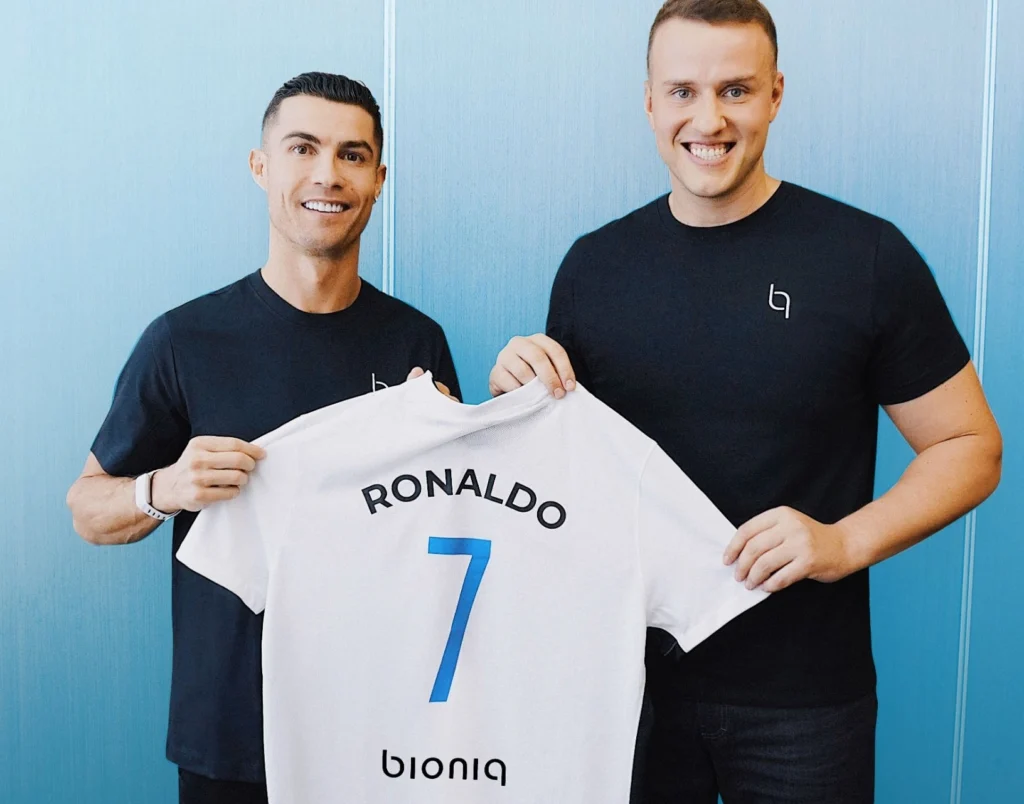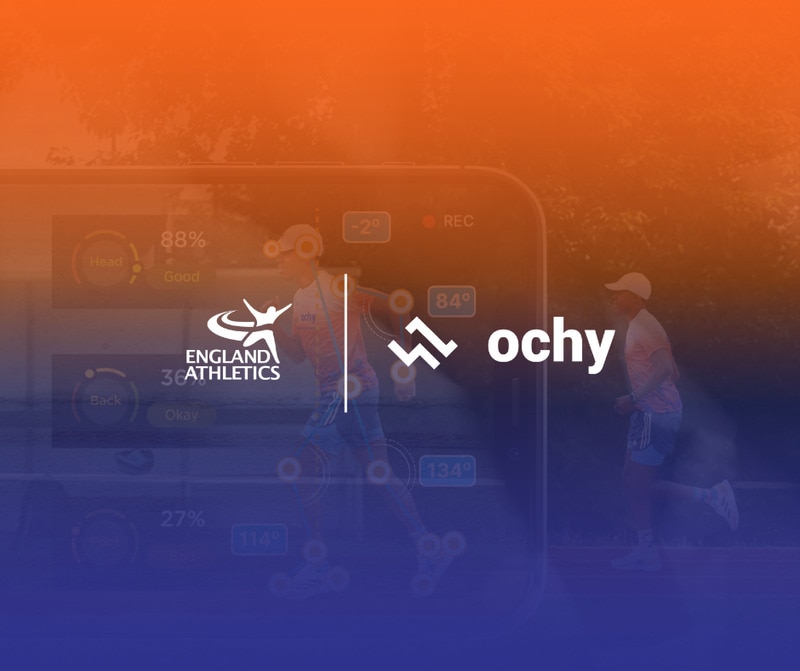TAIPEI, Taiwan and MUMBAI, India, May 22, 2025 /PRNewswire/ — MSI, a leading brand in gaming, content creation, and business & productivity laptops, is poised to revolutionize computing and gaming at the 2025 Computer Show, held at the Taipei Nangang Exhibition Center from May 20th, presenting a potent fusion of artistic design, state-of-the-art gaming technology, innovative collaborations, and a glimpse into future product design directions. Demonstrating their diverse collaborative spirit, MSI boasts unique partnerships evident in the Prestige 13 AI+ Ukiyo-e Edition, embodying the spirit of craftsmanship, and the Stealth A16 AI+ Mercedes-AMG Motorsport and Prestige 16 AI+ Mercedes-AMG Motorsport editions, which capture the essence of luxury and performance. Building on this momentum, MSI recently celebrated significant wins at the esteemed Best Choice Awards, with the Titan 18 HX Dragon Edition Norse Myth securing Gold in the Gaming & Entertainment category, and the newly launched Claw 8 AI+, alongside the visually captivating Prestige 13 AI+ Ukiyo-e Edition, both earning recognition in the Computer & System category. This year’s showcase will not only highlight the artistry behind their special editions and the debut of the new Claw handheld gaming device but also explore exciting collaborations and offer a sneak peek into the future of AI-enhanced computing.
Commenting on the introduction of the new line-up, Green Lin, NB Regional Marketing Manager of India & Middle East, MSI said, “At this year’s COMPUTEX, MSI is redefining the future of gaming and computing through bold collaborations, cutting-edge AI innovation, and unparalleled design. From our Artisan Collection blending traditional craftsmanship with modern technology to our high-performance Mercedes-AMG Motorsport editions and the versatile Claw handheld series, we’re pushing boundaries to deliver extraordinary experiences. With the power of RTX 50 series and our award-winning lineup, MSI continues to lead the industry—where artistry, performance, and innovation collide.”
Waves of Innovation: Following the Ukiyo-e Edition, a New Artisan Collection Arrives
MSI’s groundbreaking collaboration with the venerable Japanese lacquerware company OKADAYA has yielded the Prestige 13 AI+ Ukiyo-e Edition laptop, a recipient of the prestigious COMPUTEX Best Choice Award. This exceptional creation fuses the delicate beauty and rarity of 400-year-old Yamanaka lacquer artistry with state-of-the-art AI technology.
Adorned with Katsushika Hokusai’s iconic Ukiyo-e woodblock print, ‘The Great Wave off Kanagawa’, the laptop beautifully illustrates how this art form – with its characteristic flat, bold colors and distinct outlines – transcends its woodblock origins to influence modern technology. It masterfully bridges tradition and innovation, embodying the spirit and aesthetic sensibilities of its era. This unique design underscores MSI’s commitment to crafting products that are not only powerful in performance but also visually arresting.
Building on this fusion of art and technology, MSI is excited to announce that a new Artisan Collection will be showcased at the upcoming COMPUTEX event, further exploring the harmonious blend of traditional craftsmanship and cutting-edge innovation.
Witness Stunning Collaboration: Mercedes-AMG Motorsport Family
Following the success of last year’s collaboration, MSI continues to push the boundaries of luxury gaming products through its ongoing partnership with Mercedes-AMG. Strengthening and expanding this collaboration, MSI unveils two new co-creations this year: the Stealth A16 AI+ Mercedes-AMG Motorsport and the Prestige 16 AI+ Mercedes-AMG Motorsport, representing a remarkable crossover between the two brands.
The Stealth A16 AI+, featuring both Intel and AMD processors with NVIDIA® GeForce RTX™ 50 Series Laptop GPUs, also showcases an upgraded premium display panel. The Prestige 16 AI+, equipped with an Intel CPU, boasts a stunning 4K OLED panel.
Both laptops feature a unique design incorporating an exclusive co-branded logo and AMG patterns, epitomizing the luxurious gaming experience. Bundled with premium co-branded items such as a laptop sleeve, mouse, and mousepad, these products embody the shared spirit of luxury between MSI and Mercedes-AMG.
Unlock Limitless Gaming with Expanded Processor Options: Introducing the Versatile Claw A8 Platform and the Upgraded Claw 8 AI+ Edition
Riding the wave of success from the MSI Claw 8 AI+, a late 2024 entry that quickly made its mark in the handheld market and recently secured the prestigious 2025 COMPUTEX Best Choice Award, MSI is aggressively expanding its reach in the handheld gaming sphere. This year brings the exciting debut of not just one, but two compelling options: the all-new Claw A8 and the stylish Claw 8 AI+ Polar Tempest Edition. This dual launch empowers gamers with the freedom to choose between AMD and Intel platforms, tailoring their experience to their preferences.
For those seeking a different flavor of handheld power, the New Claw A8 offers a delightful design paired with a vibrant 8″ FHD+ 120Hz touchscreen. Driven by a AMD Ryzen™ Z2 Extreme Processor, complemented by rapid LPDDR5-800 memory, the Claw A8 provides a smooth and immersive gaming experience. Its versatile I/O port, ensures seamless connectivity for any gaming adventure.
The Claw 8 AI+ Polar Tempest Edition, fuelled by the Intel® Core™ Ultra 7 processor 258V, elevates storage with an upgraded 2TB NVMe SSD. Its striking new design features a stunning white finish with a glittering UV coating, ensuring it turns heads while delivering exceptional performance.
Adding another layer of personalization, both the Claw 8 AI+ Polar Tempest Edition and the New Claw A8 will be available in a range of distinct color options, allowing gamers to select the style that best reflects their individuality.
The RTX50 Era AI revolution
MSI is ready to usher in a new era of graphics and artificial intelligence with the integration of the upcoming RTX 50 series into its flagship laptops, such as new ID design Crosshair and Cyborg series. With a compelling MSI AI Robot, we demo the comparison against the RTX 40 series, utilizing the Raider A18 HX as a benchmark. This demonstration will highlight the tangible performance gains and enhanced AI functionalities that the RTX 50 series brings to MSI’s high-end laptops.
A Glimpse into the Future: Fluid Beyond Boundaries, Infinite Possibilities
Alongside the demonstration of RTX 50 series equipped machines at the event, MSI also unveiled its exciting next-generation Business & Productivity new ID design concepts. These next-gen models feature a more fluid and minimalistic style, representing the thinnest laptops MSI has ever created with as thin as 13.9mm. These laptops will come in both 2-in-1 “Flip” design and standard clamshell form, while also feature premium OLED displays that supports next-gen stylus and targeting full-day battery life. The design is expected to support future platforms like Intel’s next-gen processor, codenamed Panther Lake.
This presence underscores its unwavering commitment to design, performance, and partnership innovation. From artisan collections to new handhelds, MSI pushes boundaries. Beyond its current impressive products, MSI is shaping the future with new Business & Productivity and Gaming Series laptop designs for the next generation, promising more exciting developments. Looking ahead, MSI’s design vision embraces absolute visual consistency and elegant aesthetics, presenting ‘Fluid Beyond Boundaries, Infinite Possibilities’.
Specification:
|
Model Name
|
Prestige 13 AI+ Ukiyo-e Edition
|
|
Processor
|
Up to Intel® Core™ Ultra 9 processor 288V
|
|
Operating System
|
Windows 11 Home / Windows 11 Pro
(MSI recommends Windows 11 Pro for business.)
|
|
Memory
|
Up to 32GB LPDDR5x-8533 Memory on Package
|
|
Display
|
13.3″ 2.8K (2880 x 1800), 16:10, 100% DCI-P3 (Typical), VESA DisplayHDR™ True Black 500, OLED panel
|
|
Graphics
|
Intel® Arc™ 140V GPU
|
|
Storage Slots
|
1 x NVMe M.2 SSD by PCIe Gen4 x4
|
|
Keyboard
|
Single Backlit Keyboard (Gold) with Copilot Key
|
|
Audio
|
2 × 2W Speakers / 1× Audio combo jack / DTS Audio Processing / Spatial Array Microphone (3 Mic) /
Hi-Res Audio Ready
|
|
USB Ports
|
2 x Thunderbolt™ 4 (DisplayPort™/ Power Delivery 3.0)
1 x USB 3.2 Gen1 Type-A,
|
|
Card Reader
|
1 x microSD Card Reader
|
|
Video Output
|
1 x HDMI™ 2.1 (8K@60Hz / 4K@120Hz)
2 x Thunderbolt™ 4 (DisplayPort™/ Power Delivery 3.0)
|
|
Communication
|
Intel® Killer™ Wi-Fi 7 BE1750, Bluetooth v5.4
|
|
Webcam
|
IR 5MP type(30fps@1944p) with HDR & 3D Noise Reduction+ (3DNR+)
|
|
Security
|
Microsoft Pluton Security Technology / Discrete Trusted Platform Module(dTPM) 2.0 / Fingerprint Reader / Webcam Shutter / IR
Webcam / Kensington Lock
|
|
Battery
|
4-Cell, Li-Polymer, 75Whr
|
|
Dimension
|
299 x 210 x 16.9 mm
|
|
Weight
|
990 g
|
|
Model Name
|
Stealth A16 AI+ Mercedes-AMG Motorsport
|
|
Processor
|
AMD Ryzen™ AI 9 HX 370 Processor
|
|
Operating System
|
Windows 11 Home / Windows 11 Pro
(MSI recommends Windows 11 Pro for business.)
|
|
Memory
|
DDR5, 2 slots, up to 96GB
|
|
Display
|
16″ QHD+ (2560×1600), 16:10, 240Hz Refresh Rate, 100% DCI-P3(Typical), VESA DisplayHDR™ True Black 600, OLED panel
|
|
Graphics
|
NVIDIA® GeForce RTX™ 5070 Laptop GPU 8GB GDDR7
|
|
Storage Slots
|
1 x NVMe M.2 SSD by PCIe Gen4 x4
|
|
Keyboard
|
Per-Key RGB Gaming Keyboard by SteelSeries with Copilot Key
|
|
Audio
|
6 Speakers designed by Dynaudio system (2 x 2W Speakers + 4 x 2W Woofers) / 1 x Audio combo jack / Nahimic 3 Audio
Enhance / Hi-Res Audio ready
|
|
USB Ports
|
1 x USB4® Type-C / DisplayPort™ / Power Delivery 3.0 (Thunderbolt™ 4 Compatible)
2 x USB 3.2 Gen2 Type-A
|
|
Video Output
|
1 x HDMI™ 2.1 (8K@60Hz / 4K@120Hz)
1 x USB4® Type-C / DisplayPort™ / Power Delivery 3.0 (Thunderbolt™ 4 Compatible)
|
|
Communication
|
Gigabit Ethernet (up to 2.5GbE) / Wi-Fi 7, Bluetooth v5.4
|
|
Webcam
|
IR FHD type (30fps@1080p) with HDR & 3D Noise Reduction+ (3DNR+)
|
|
Security
|
Firmware Trusted Platform Module(fTPM) 2.0 / Microsoft Pluton Security Technology / IR Webcam / Webcam Shutter /
Fingerprint Reader / Kensington Lock
|
|
Battery
|
4-Cell, Li-Polymer, 99.9Whr
|
|
Dimension
|
355.8 x 259.7 x 19.95 mm
|
|
Weight
|
2.1 Kg
|
|
Model Name
|
Prestige 16 AI+ Mercedes-AMG Motorsport
|
|
Processor
|
Up to Intel® Core™ Ultra 9 processor 288V
|
|
Operating System
|
Windows 11 Home / Windows 11 Pro
(MSI recommends Windows 11 Pro for business.)
|
|
Memory
|
Up to 32GB LPDDR5x-8533 Memory on Package
|
|
Display
|
16″ UHD+ (3840 x 2400), 16:10, 100% DCI-P3 (Typical), VESA DisplayHDR™ True Black 600, OLED panel
|
|
Graphics
|
Intel® Arc™ 140V GPU
|
|
Storage Slots
|
2 x NVMe M.2 SSD by PCIe Gen4
|
|
Keyboard
|
Single Backlit Keyboard (Red) with Copilot Key
|
|
Audio
|
2 × 2W Speakers / 1× Audio combo jack / DTS Audio Processing / Spatial Array Microphone (3 Mic) / Hi-Res Audio Ready
|
|
USB Ports
|
2 x Thunderbolt™ 4 (DisplayPort™/ Power Delivery 3.0)
1 x USB 3.2 Gen2 Type-A
|
|
Card Reader
|
1 x SD Card Reader
|
|
Video Output
|
1 x HDMI™ 2.1 (8K @ 60Hz / 4K @ 120Hz)
2 x Thunderbolt™ 4 (DisplayPort™/ Power Delivery 3.0)
|
|
Communication
|
Gigabit Ethernet / Intel® Killer™ Wi-Fi 7 BE1750, Bluetooth v5.4
|
|
Webcam
|
IR 5MP type(30fps@1944p) with HDR & 3D Noise Reduction+ (3DNR+)
|
|
Security
|
Microsoft Pluton Security Technology / Discrete Trusted Platform Module(dTPM) 2.0/ Fingerprint Reader / IR Webcam / Webcam
Shutter/ Kensington Lock
|
|
Battery
|
4-Cell, Li-Polymer, 99.9Whr
|
|
Dimension
|
358.4 x 254.4 x 16.85~18.95 mm
|
|
Weight
|
1.5 Kg
|
|
Model Name
|
Claw 8 AI+ Polar Tempest Edition
|
|
Processor
|
Intel® Core™ Ultra 7 processor 258V
|
|
Operating System
|
Windows 11 Home
|
|
Memory
|
32GB LPDDR5x-8533 Memory on Package
|
|
Display
|
8″ FHD+ (1920 x 1200), 16:10, Touchscreen, 120Hz Refresh Rate, 100% sRGB(Typical), 500nits(Typical), VRR, IPS-Level panel
|
|
Graphics
|
Intel® Arc™ 140V GPU
|
|
Storage Slots
|
1 x NVMe M.2 SSD by PCIe Gen4 x4
|
|
Sensor
|
6-Axis IMU Vibration Motor / Fingerprint Reader
|
|
Audio
|
2 × 2W Speakers / 1× Audio combo jack / DTS Audio Processing / Hi-Res Audio ready
|
|
USB Ports
|
2 x Thunderbolt™ 4 (DisplayPort™/ Power Delivery 3.0)
|
|
Card Reader
|
1 x microSD Card Reader
|
|
Communication
|
Intel® Wi-Fi 7, Bluetooth v5.4
|
|
Battery
|
6-Cell, Li-Polymer, 80Whr
|
|
Dimension
|
299 x 126 x 24 mm
|
|
Weight
|
795 g
|
|
Model Name
|
Claw A8 BZ2EM
|
|
Processor
|
AMD Ryzen™ Z2 Extreme Processor
|
|
Operating System
|
Windows 11 Home
|
|
Memory
|
LPDDR5x-8000 onboard, up to 24GB, dual channel
|
|
Display
|
8″ FHD+ (1920 x 1200), 16:10, Touchscreen, 120Hz Refresh Rate, 100% sRGB(Typical), 500nits(Typical), VRR, IPS-Level panel
|
|
Graphics
|
AMD Radeon™ Graphics
|
|
Storage Slots
|
1 x NVMe M.2 2280 SSD by PCIe Gen 4 x4
|
|
Sensor
|
6-Axis IMU Vibration Motor / Fingerprint Reader
|
|
Audio
|
2 × 2W Speakers / 1× Audio combo jack / DTS Audio Processing / Hi-Res Audio ready
|
|
USB Ports
|
2 x USB4® Type-C / DisplayPort™ / Power Delivery 3.0 (Thunderbolt™ 4 Compatible)
|
|
Card Reader
|
1 x microSD Card Reader
|
|
Communication
|
Wi-Fi 6E, Bluetooth v5.3
|
|
Battery
|
6-Cell, Li-Polymer, 80Whr
|
|
Dimension
|
299.5 x 126.2 x 24 mm
|
|
Weight
|
765g (est.)
|
For high-res images, please visit: https://msi.gm/S64BC976
MSI Twitch: twitch.tv/msigaming
MSI GAMING: https://www.msi.com/
MSI Facebook: https://www.facebook.com/MSIGaming
MSI Instagram: https://www.instagram.com/msigaming/
MSI YouTube: https://www.youtube.com/user/MSIGamingGlobal
MSI Twitter: https://twitter.com/msitweets
Subscribe to MSI RSS Feeds via https://www.msi.com/rss for real-time news and more product info.
About MSI GAMING
As a world leading gaming brand, MSI is the most trusted name in gaming and eSports. We stand by our principles of breakthroughs in design, the pursuit of excellence, and technological innovation. Integrating gamers’ most coveted extreme performance, realistic visuals, authentic sound, precise control and smooth streaming functions into its gaming rigs, MSI frees gamers from tedious trial and error and pushes gaming performance beyond limits. The determination to surpass past achievements has made MSI a ‘True Gaming’ brand with gaming spirit throughout the industry! For more product information, please go to https://www.msi.com/
●All rights of the technical, pictures, text and other content published in this press release are reserved. Contents are subject to changes without prior notice.
About MSI
MSI is a world leader in gaming, content creation and AIoT solutions, dedicated to fostering connections through technology. Bolstered by its cutting-edge R&D capabilities and customer-driven innovation, MSI has a wide-ranging global presence spanning over 120 countries. Its comprehensive lineup of laptops, graphics cards, monitors, motherboards, desktops, peripherals, servers, IPCs, robotic appliances, and vehicle infotainment and telematics systems are globally acclaimed. Committed to advancing user experiences through the finest product quality, intuitive user interface and design aesthetics, MSI is a leading brand that shapes the future of technology, bringing families and communities closer together. For more product information, please go to https://www.msi.com
MSI Gaming: https://in.msi.com/
MSI Facebook: https://www.facebook.com/MSIGamingIndia/ / https://www.facebook.com/MSIIndia
MSI Instagram: https://www.instagram.com/msigaming_india/ / https://www.instagram.com/msi_india/?hl=en
*All rights of the technical, pictures, text and other content published in this press release are reserved. Contents are subject to changes without prior notice.



















 Image: Saudi Projects on LinkedIn
Image: Saudi Projects on LinkedIn Image: Saudi Projects on LinkedIn and Qiddiya
Image: Saudi Projects on LinkedIn and Qiddiya

















































